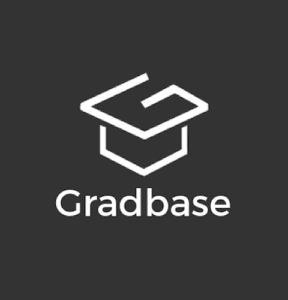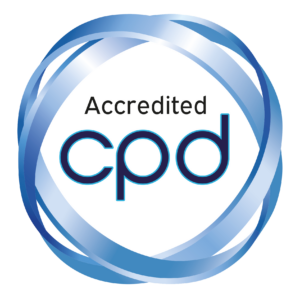

The Dawn of Continuous Learning
The process of undergoing continuous professional learning is encouraged and attested by professional bodies and associations of which the Royal Medical Colleges (established in the 16th century) were the first.
It was only towards the end of the 18th century, however, that the demand for reskilling within the lifetime of a professional’s career exploded – with many professional bodies being founded during the first industrial revolution. And for good reason: the increasing specialisation of labour, coupled with the manufacturing boom which demanded frequent changes in production processes, meant that factory workers and their superiors needed to learn new skills continuously and in short spaces of time.
The rate of professional growth thus became more dynamic as society transformed, highlighted by the following two Industrial revolutions which spanned the 19th and 20th centuries.
From that point onwards, the rate of sector growth has sped up across the board (unless the profession became obsolete). The innovation of new sub fields for professionals to explore during their career lifetime has now gone so far as to introduce the possibility of an individual needing to be a part of multiple professional bodies or associations.
Today, there are currently over 1000 provisional bodies across the UK alone. A number that is expected to increase over the next 4th industrial revolution.
For this reason, professional bodies are now expecting more than ever that their members stay upskilled by ongoing Continued Professional Development (CPD).
The term CPD was born out of professional bodies who continue to regulate standards of practicing professionals in their fields. This occurred in parallel with many professional bodies moving from a more relaxed reskilling model, in which they allow their members to complete self directed CPD and only put forward a suggested amount of hours for the professional to complete, to a more demanding one where all CPD undertaken must be industry specific and many now have a mandatory minimum amount of hours.
This trend further reflects the speed at which society and the many professional sectors that make it up are evolving. So fast, in fact, that the lines between academia and professional application are blurring. CPD is the solution that naturally merges these two worlds.
CPD in The Age of The Degree
Let’s consider some of the ways in which CPD facilitates the growing need for efficient reskilling of an expanding workforce
Courses are short and, more often than not, can be taken alongside work commitments
Relevance to current field demands. The training is written and led by practitioners rather than people that only know the theory
Flexibility of course creation. The course can be created and implemented in a streamlined way – with no need for red tape
Training accreditation providers can opt to get their training quality checked by a third party accreditation company to assure the delegates of the high standard of training they offer. Find out more
The Ascribed worth is the worth that the delegates place on having completed the training
The last point is perhaps the only one in which a university degree has a clear inferred advantage. As mentioned in the definition this is not necessarily the worth an employer places on it but the worth ascribed by the delegate/professional themselves.
Degrees are converted accolades of life, known and respected ubiquitously for centuries. However, CPD training is much shorter and mainly undergone to gain applicable knowledge rather than a status. For this reason people are more interested in completing CPD training fast to gain the knowledge to apply to their role.
Fair enough, people do not want a stack of certificates in a drawer they rarely open. And the walls of professionals are usually filled with tools that help them outline the future, such as planning charts and visualisation boards. So not much space for the hundreds of CPD certificates one would amass over a lifetime of professional training upgrades.
Despite this, the relevance of CPD training remains and will continue to grow as a need for employees to perform and subsequently a demand for employers to supply.
Future-Proofing CPD in the Digital Age
Being in the digital age, this is of course a possibility that has been explored, created and one that the CPD Standards Office is supporting to establish as a systematic way to demonstrate skill growth to current and future employees.
In particular, we are looking to shift from today’s paper-based CPD certification model (which suffers from the problems highlighted above as well as a significant rate of document loss/damage) to a hybrid model, which combines paper certificates with their “digital twins”: secure, tamper-proof and always-available CPD certificates which can be instantly verified on-demand by employers and regulators. In this way, we are able to make the most of the advantages of paper-based certificates (more tangible and robust certifications) whilst also addressing the demands of a digital society which enables and favours greater efficiency.
The digital certificates we are offering all our members can be issued with ease thanks to an easy-to-use web application that accepts Excel spreadsheets. When a CPD provider issues their digital certificates in this way, each learner receives an email containing a QR code. This QR code can be easily shared on CVs, business cards, social media or on any other medium required. A simple scan of a given QR code will reveal the details of the matching certificate in a matter of seconds. No need to scan, hand over or present paper certificates any longer. Moreover:
- Thanks to our use of Blockchain technology, the data in the certificate cannot be tampered with. Any attempt to alter its details will result in a mismatch with the genuine certificate fingerprint on the Blockchain and therefore a failed verification.
- CPD verifiers can always be sure that the verification of the certificate is genuine, thanks to our use of public-key cryptographic methods when signing the certificate as well as a clear indication of the patronage of the platform by CPDSO.
In rolling out digital-twin certificates, we have thought carefully about the needs of learners too, especially the fact that CPD certificates are likely to fall in and out of relevance at different stages of their careers. As a result, loss or damage to a paper CPD certificate can result in significant hardship when proving suitability for a given job. Our “Portfolio” feature goes a long way in mitigating this risk: each digitally issued CPD certificate can be added by its recipient to their so-called “digital portfolio” on the platform as it is received. In doing so, the learner can build a digital record of their CPD certificates and points accrued over the course of their career. Each certificate can be downloaded on demand and even an entire CPD portfolio can be shared with just one QR code or link.
As this article has shown, professional attestation has undergone fundamental shifts over the course of the centuries, and this decade is no different. Paper-based certifications possess unique advantages which should not be lost. However, in an ever more decentralised and digital world of work, made even more so by the pandemic, a new, parallel certification paradigm is needed to cater for both the large volumes of highly-valuable CPD qualifications and the renewed needs of employers. The CPD Standards Office, together with its technical partner, Gradbase (https://cpdso.gradba.se) has made a fundamental move in this direction, by deploying a “hybrid” certification model which so far has provided value to many of its members and which we hope will continue to evolve and become the de-facto standard for CPD.
This article was written by Kirstie Walker of The CPD Standards Office in conjunction with Alberto De Capitani at Gradbase. CPDSO are working with Gradbase, a startup based in London, UK that aims to digitise and tamper-proof all forms of personal certification using Blockchain technology. In so doing, hiring processes are made more efficient and fraud is minimised. If you would like to sign up to use Gradbase for free as part of your CPDSO membership please contact your designated account manager. If you wish to know more about Gradbase and its technology please contact Alberto De Capitani at alberto.de-capitani@gradba.se






